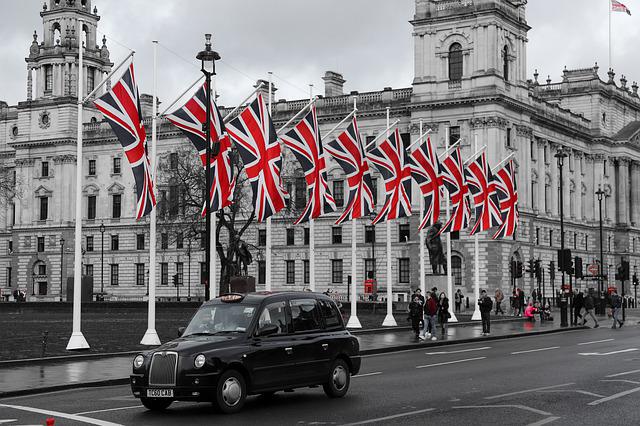More than four years on from the onset of the pandemic, there are still lingering effects across the economy. Amongst others, productivity growth has stalled, working patterns have been disrupted, and public borrowing and debt levels remain elevated.
In spite of these structural changes, many industries have managed to completely recover, with activity already surpassing 2019 levels or at least expected to do so by the end of this year. However, one notable counterexample to this is tourism, which is still exhibiting a pre-pandemic shortfall on several key metrics.
Official data from the Office for National Statistics (ONS) showed that there were 38.0 million overseas tourists visiting the UK last year. Though this figure has increased for two consecutive years, it remains 7.1% short of 2019’s figure of 40.9 million. The latest projections of tourist numbers from VisitBritain suggest only moderate improvement will take place this year, with visitor numbers expected to reach 38.7 million. As such, there would still be a shortfall in visitor numbers in excess of 5%.
Distracting attention from the shortfall in the number of visitors is the fact that their total spending is up. The ONS suggests that overseas visitors spent £31.1 billion in the UK in 2023, while VisitBritain expects this figure to increase to £32.5 billion this year. Both of these figures firmly surpass the last pre-pandemic value of £28.4 billion in 2019.
However, it is important to note that these datapoints are presented in nominal terms. As a result, they are significantly supported by the high rates of inflation that have prevailed in recent years.
If we were instead to assess the real value of tourist expenditure, the narrative shifts considerably, revealing an even greater shortfall than that for visitor numbers. In real terms, VisitBritain’s spending forecast for 2024 is 8.0% lower than the equivalent figure for 2019, equivalent to a £2.8 billion hole in tourist spending. Though this is only a fraction of total expenditure, it still represents a cost to the economy and one with disproportionate impacts on certain sectors, notably those of a consumer-facing nature, such as hospitality, travel, and retail.
Figure 1 – Real expenditure of inbound visitors, 2024 prices

Source: Office for National Statistics, VisitBritain, Cebr analysis
What are the factors driving this continued shortfall in activity? A general cautiousness surrounding international travel is one likely candidate, be that caused by unfavourable economic conditions, weak consumer confidence, or lingering effects from the pandemic. This point is supported by the fact that the number of UK outbound tourist visits is also down relative to 2019, while tourist volumes globally are expected to remain down by 3% this year according to the UN Tourism Barometer.
However, this global shortfall is of smaller magnitude than the UK equivalent. Meanwhile, expected tourist volumes for Europe as a whole, covering the UK’s most direct competitors for international visitors, show a different view. Across the continent, visitor numbers are projected to return to growth relative to pre-pandemic this year. This suggests that the UK is falling behind its closest competitors as a tourist destination and that there must be some country-specific factors at play.
Amongst these is competitiveness. Comparing average readings across 2024 so far with those from 2019 suggests that consumer prices are 23.5% higher in the UK. This increase is larger than that experienced in competitor markets, such as the Eurozone and US. Meanwhile, price rises in categories typically consumed by tourists are even higher. Relative to 2019, prices for accommodation services have been 35.8% higher in 2024, while the equivalent figures for restaurants and cafes and airfares are 28.7% and 47.6%, respectively.
These heightened costs are exacerbated by exchange rate changes. Relative to 2019, sterling is now stronger against key currencies such as the Chinese yuan and euro, reducing the purchasing power of tourists who would trade in these currencies and disincentivising them from selecting the UK as their destination. Conversely, sterling has weakened slightly against the US dollar over this time period, which is notable given that North America is the only source region for which the number of visitors entering the UK has surpassed 2019 levels.
There are potential policy factors too. Heightened barriers to entry for visitors have been cited as a factor. Meanwhile, more recently, domestic unrest led to several countries issuing advice to their citizens regarding the safety of travelling to the UK, which presents downside risk to the summer tourism season.
Another contributing factor is the termination of the UK’s tax-free shopping scheme post-Brexit. By making the cost of travel more expensive, abandoning this policy is seen to disincentivise trips to the UK, with travellers on the margin instead opting for competitor economies that still operate such schemes. This has a disproportionately damaging effect, given that users of these schemes tend to be higher spenders than the average tourist. Our 2023 report on the topic showed that a fully utilised tax-free shopping scheme could boost tourist expenditure by £3.9 billion annually, primarily through decreasing the costs of a trip to the UK, thus encouraging more visitors. As such, this alone could help to plug the lingering activity gap.
Our analysis has also shown that the reimplementation of a tax-free shopping scheme would be net beneficial to the Treasury, since the forgone VAT revenues on eligible sales would be more than offset by higher returns from other types of taxes. Consequently, this represents a relatively low-hanging fruit for a new administration facing a tough public finance environment.
Overall, the UK tourism industry continues to face difficult trading circumstances. Under the Tourism Recovery Plan set by the Johnson administration in 2021, inbound tourism was to have recovered by the end of 2024. The anticipated shortfall in tourist numbers and real expenditure based on the latest data suggest that this target will not be achieved. With a new government now in place, helping the UK return to being a flourishing tourist destination will likely be a topic for continued discussion.
Source: Centre for Economics and Business Research (CEBR)
Legal Notice: The information in this article is intended for information purposes only. It is not intended for professional information purposes specific to a person or an institution. Every institution has different requirements because of its own circumstances even though they bear a resemblance to each other. Consequently, it is your interest to consult on an expert before taking a decision based on information stated in this article and putting into practice. Neither Karen Audit nor related person or institutions are not responsible for any damages or losses that might occur in consequence of the use of the information in this article by private or formal, real or legal person and institutions.






